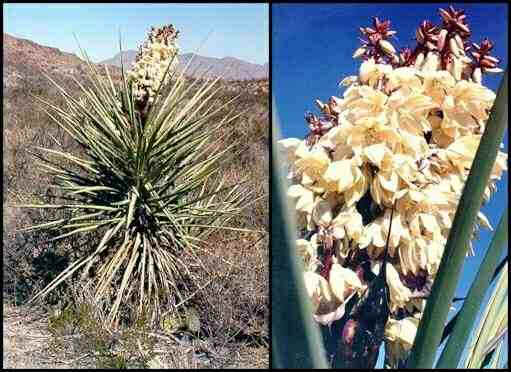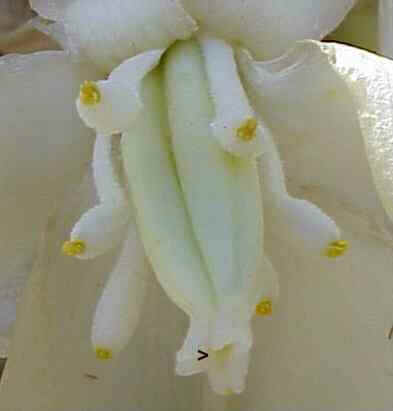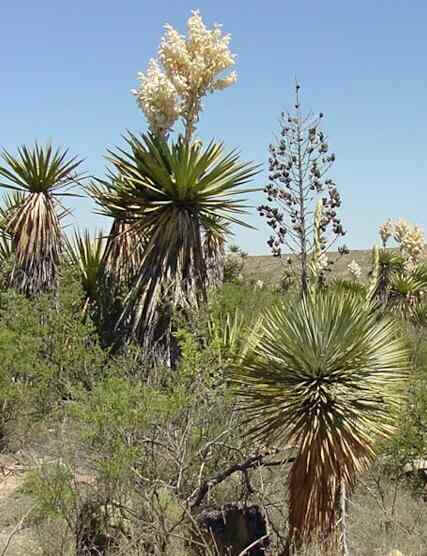|
Yucca species, in the lily family (Liliaceae), are relatively large succulent plants, typically 2-4 metres tall. They have stiff, perennial leaves and they produce large heads of creamy-white, waxy flowers. They are common in the higher elevations of many North and Central American deserts, and are tolerant of cold winters. One example is the torrey yucca (Yucca treculeana), also known as the Spanish dagger, shown in image 1.
All Yucca species have an intimate mutualistic association with tiny yucca moths (genus Tegeticula), which pollinate the flowers (image 2 below).
The female moth, after mating, deposits her eggs in the ovary at the base of the flower. Then she collects a ball of pollen from other flowers and places this pollen ball in a special depression in the stigma of the flower, to ensure that the flower is fertilised (image 3). This pollination system is so precise that only yucca moths can pollinate these plants. Yuccas grown in regions where the yucca moth is absent will never produce seeds unless the plants are hand-pollinated. Moreover, there is growing evidence that the many different Yucca species are pollinated by different yucca moths, specialised for the plant species.
After the flowers are fertilised, the flowering stalk usually elongates and develops capsular fruits (image 4), which eventually split open to reveal stacks of black, flattened seeds (image 5) that are shaken free from the capsules by wind. However, during the period of fruit ripening, the moth's eggs hatch and the young larvae feed on the seeds, eating their way through some of the seed columns. The larva then drops to the ground and pupates in the soil, so that a new generation of moths emerges in the following season. This mutually beneficial arrangement is so tightly regulated that Yucca plants abort their fruit development if the moth lays too many eggs in the ovary. This ensures that at least some viable seeds will be produced each year, while some also will be eaten by grubs, so that the survival of both the plant and its pollinator is ensured.
Although all Yucca species have the same pollination biology, they differ in other ways such as plant size and habitat preferences. One unusual variation is found in the banana yucca (image 6), which has a very short flowering stalk with large (7-8 cm) drooping flowers and which develops large, fleshy fruits rather than dry seed capsules. These banana-like fruits fall to the ground, where they are eaten by rodents and other animals, which serve to disperse the seeds.
There are many different species of Yucca, and many intergradations which make them difficult to tell apart when their ranges overlap. One of the largest yuccas is the Joshua tree (Yucca brevifolia), which has much-branched stems and can grow to a height of 10 to 15 metres. This plant is highly characteristic of the Mojave desert: its distribution largely defines the boundaries of that desert. Other Yucca species commonly are characterised as being either narrow-leaved (non-succulent) such as soaptree yucca (Y. elata) or broad-leaved (succulent) such as Spanish bayonet (Y. schottii).
|






